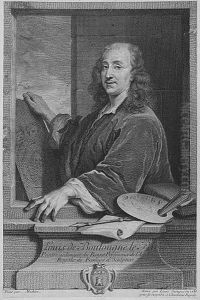Louis Starszy Boulogne Paintings
Louis de Boulogne the Elder, born in 1609, was a prominent French painter and engraver whose career contributed significantly to the artistic landscape of the 17th century in France. Not to be confused with his children, who were also distinguished artists, Louis carved a niche for himself in an era that celebrated the grandeur of Baroque art. His life and work were intricately tied to the cultural and political fabric of his time, reflecting the shifts in tastes and patronage that characterized the period.
Louis de Boulogne's early life and training are somewhat obscured by the lack of comprehensive records, but it is known that he was born into a family that appreciated the arts, which likely provided an early foundation for his artistic endeavors. His move to Paris, the cultural heart of France, marked the beginning of his professional career. In Paris, Boulogne immersed himself in the vibrant artistic community, honing his skills and establishing connections that would prove invaluable throughout his career. His work garnered the attention of influential patrons, securing his reputation as a skilled painter and engraver.
Boulogne's artistry was reflective of the Baroque style, characterized by dramatic expression, rich coloration, and dynamic movement. He excelled in religious compositions, which were highly sought after by the Church and private patrons alike, as well as mythological scenes and portraits. His ability to convey depth and emotion through his work made him a favorite among the French nobility, who were keen to commission artworks that reflected their power and sophistication.
In addition to his painting, Louis de Boulogne the Elder was an accomplished engraver, a skill that allowed his works to reach a wider audience. Engraving was a crucial medium for the dissemination of artistic ideas and styles during the 17th century, and Boulogne's contributions in this area helped to solidify his legacy.
Despite his success, detailed records of Boulogne's life remain sparse, and many of his works have been lost or attributed to other artists over the centuries. However, his influence on French art is undeniable, particularly in the way he paved the path for his children, who continued the artistic lineage. Louis de Boulogne the Elder died in 1674, leaving behind a legacy that not only marked the achievements of an individual artist but also underscored the rich tapestry of 17th-century French art. His life and work remain a testament to the vibrancy and dynamism of the Baroque era, and his contributions continue to be celebrated by art historians and enthusiasts alike.
